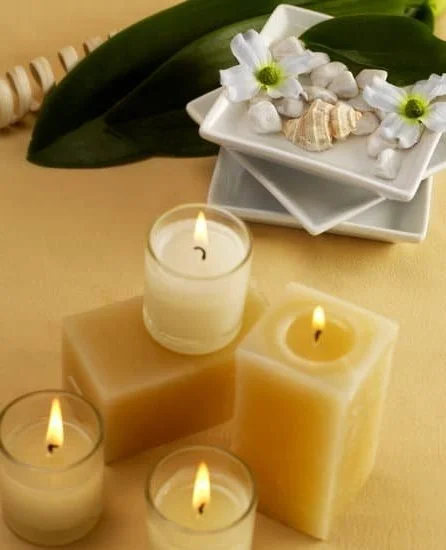Are you ready to discover the power of aromatherapy essential oils and how they can positively impact your overall well-being? This article will provide a comprehensive guide on how to apply aromatherapy essential oils, from understanding the basics to creating customized blends and using them for relief. Whether you are new to aromatherapy or looking to deepen your knowledge, this article will cover everything you need to know about harnessing the healing powers of essential oils.
Aromatherapy essential oils have been used for centuries as natural remedies for various ailments and for promoting relaxation and emotional well-being. In this section, we will delve into the fundamentals of aromatherapy essential oils, including their origins, extraction methods, and therapeutic properties. Understanding the basics of aromatherapy essential oils is crucial in knowing how to apply them effectively for optimal results.
We will explore the different types of aromatherapy essential oils available, each with its unique set of properties and benefits. From lavender to peppermint to eucalyptus, each oil offers distinct advantages that can improve overall health and wellness.
By gaining a deeper understanding of these essential oils, you will be better equipped to incorporate them into your daily routine. So, let’s embark on a journey of discovery and learn how to harness the potential of aromatherapy essential oils for a healthier and more balanced life.
Benefits of Aromatherapy Essential Oils
Aromatherapy essential oils have been used for centuries to promote well-being, both physically and mentally. These natural oils are derived from plants and contain therapeutic properties that can have a positive impact on our health. When used properly, aromatherapy essential oils can help reduce stress, improve sleep quality, boost mood, and alleviate certain symptoms of various conditions.
Improving Emotional Health
One of the key benefits of aromatherapy essential oils is their ability to improve emotional well-being. Certain scents like lavender, rose, and chamomile have calming effects that can reduce anxiety and promote relaxation. On the other hand, citrus scents such as lemon and orange are known to uplift the mood and increase energy levels. Incorporating these oils into your daily routine through diffusers or inhalation can provide a natural way to manage emotions and reduce stress.
Enhancing Physical Health
In addition to their impact on emotional health, aromatherapy essential oils can also contribute to physical well-being. Oils like peppermint, eucalyptus, and tea tree have properties that can alleviate respiratory issues such as congestion or sinusitis. Others like ginger and chamomile can help soothe digestive discomfort when used topically or taken orally (with caution). By incorporating these oils into massage blends or creating custom solutions for specific concerns, individuals can experience relief from common ailments in a natural way.
Supporting Holistic Well-Being
Overall, the use of aromatherapy essential oils offers a holistic approach to improving overall well-being. By targeting both emotional and physical health, these natural remedies provide a non-invasive alternative that complements traditional medical treatments.
Additionally, the process of using aromatherapy essential oils encourages mindfulness and self-care practices, contributing to a more balanced lifestyle. Understanding the various ways in which these oils can be applied allows individuals to harness their healing properties for improved well-being in everyday life.
By understanding
Different Types of Aromatherapy Essential Oils and Their Properties
Understanding the Different Categories of Essential Oils
Aromatherapy essential oils can be categorized based on their properties and therapeutic benefits. Some common categories include floral, citrus, woody, herbaceous, and spicy oils. Each category has distinct properties and uses, so it’s important to understand the differences before using them for aromatherapy.
Properties and Benefits of Popular Essential Oils
There are numerous essential oils available in the market, each with its own unique properties and benefits. For example, lavender essential oil is known for its calming and relaxing effects, while peppermint essential oil is popular for its invigorating and energizing properties. Some other popular essential oils include eucalyptus, tea tree, and chamomile, each offering a range of health benefits when used in aromatherapy.
Customizing Aromatherapy Solutions With Different Essential Oils
One of the great things about aromatherapy is the ability to create customized blends using different types of essential oils. By combining oils with complementary properties, such as mixing calming lavender with uplifting citrus oils, individuals can tailor their aromatherapy experience to suit their specific needs. Understanding the properties of different essential oils is key to creating personalized blends that effectively address various emotional or physical concerns.
When learning how to apply aromatherapy essential oils, it’s important to have a good understanding of the different types of oils available and their respective properties. This knowledge will enable individuals to make informed decisions about which essential oils to use for specific purposes, whether it’s relaxation, mood enhancement, or addressing certain health issues.
Safety Precautions and Best Practices for Using Aromatherapy Essential Oils
When using aromatherapy essential oils, it is important to do so with caution and to follow the best practices for optimal safety. Here are some safety precautions and guidelines to consider when using aromatherapy essential oils:
- Always dilute essential oils before applying them to the skin. Undiluted essential oils can cause irritation or allergic reactions. For topical application, it is recommended to mix a few drops of essential oil with a carrier oil, such as coconut oil or almond oil, before applying it to the skin.
- Do a patch test before using a new essential oil topically. Apply a small amount of diluted essential oil to a small area of the skin and wait 24 hours to see if any irritation occurs. If redness, itching, or any other adverse reaction occurs, discontinue use immediately.
- Keep essential oils out of reach of children and pets. Essential oils can be harmful if ingested, and certain oils can be toxic to animals.
- Avoid direct contact with the eyes, ears, and mucous membranes when using essential oils. If accidental contact occurs, flush the affected area with a carrier oil and seek medical attention if necessary.
- Store essential oils in a cool, dark place away from direct sunlight and heat. This will help preserve their potency and prevent them from oxidizing.
Learning how to apply aromatherapy essential oils safely is crucial for enjoying their benefits without risk of harm or adverse effects.
Remember that following these precautions when using aromatherapy essential oils can help you enjoy all the therapeutic properties they have while ensuring your safety above all else. With these best practices in mind, you can experience the full benefits of aromatherapy while minimizing any potential risks associated with improper use.
Various Methods of Applying Aromatherapy Essential Oils
Aromatherapy essential oils can be applied through various methods, each offering unique benefits and effects. Understanding how to apply aromatherapy essential oils using diffusion, topical application, and inhalation can help you fully experience their therapeutic properties.
Diffusion is one of the most popular ways to enjoy the benefits of aromatherapy essential oils. This method involves using a diffuser to disperse the oils into the air, allowing you to inhale them. Diffusers come in different types, such as ultrasonic diffusers, nebulizing diffusers, and evaporative diffusers. Each type has its own strengths and weaknesses, so it’s important to choose one that best suits your needs.
Topical application involves directly applying aromatherapy essential oils onto the skin. However, it’s crucial to dilute these oils with a carrier oil before applying them topically to avoid skin irritation or sensitivity. Carrier oils like coconut oil, almond oil, or jojoba oil are commonly used for dilution. Once diluted, you can apply the oil blend onto specific areas of the body for localized relief or overall wellness support.
Inhalation is another effective method for applying aromatherapy essential oils. You can simply inhale the aroma of the oils from a bottle or add a few drops to a bowl of hot water and breathe in the steam. This method allows for quick absorption of the oils into the bloodstream through the respiratory system, providing immediate therapeutic benefits.
| Method | Benefits |
|---|---|
| Diffusion | Disperses oils into the air for inhalation |
| Topical Application | Localized relief and overall wellness support |
| Inhalation | Quick absorption into bloodstream through respiratory system |
DIY Aromatherapy Essential Oil Blends
Creating your own customized aromatherapy blends can be a fun and rewarding experience. By combining different essential oils, you can tailor the aroma and therapeutic properties to suit your specific needs. Here’s how to get started with making your own DIY aromatherapy essential oil blends.
First, familiarize yourself with the various essential oils and their individual properties. Some oils are known for their calming effects, while others are more energizing or have specific benefits such as alleviating headaches or aiding in digestion. Understanding these properties will help you choose the right combination for your blend.
Next, gather the necessary supplies, including a selection of essential oils, carrier oils (such as jojoba or sweet almond oil), and glass bottles for storage. It’s important to use dark-colored glass bottles to protect the oils from light exposure, which can degrade their quality over time.
When creating your blend, start by choosing a base note oil (such as lavender or sandalwood), a middle note oil (such as rose or geranium), and a top note oil (such as bergamot or lemon). The ratios of these oils will depend on the strength of scent you desire and the intended therapeutic benefits.
Once you have blended your essential oils together, be sure to store them in a cool, dark place to preserve their potency. Remember to label each blend with its ingredients and date of creation for future reference. With some experimentation and creativity, you can craft personalized aromatherapy solutions that enhance your well-being.
| Essential Oils | Properties |
|---|---|
| Lavender | Calming, soothing |
| Bergamot | Energizing, uplifting |
| Sandalwood | Grounding, comforting |
Aromatherapy Essential Oils for Common Ailments
Aromatherapy essential oils can be a natural and effective way to alleviate common ailments such as headaches, muscle aches, and stress. When used properly, these oils can provide relief and promote overall well-being. Here’s how to apply aromatherapy essential oils for common ailments.
For headaches, peppermint oil is a popular choice due to its cooling effect that can help alleviate tension. To use it, dilute a few drops of peppermint oil with a carrier oil like coconut or almond oil, then massage the mixture onto your temples and forehead. You can also add a few drops of peppermint oil to a bowl of hot water and inhale the steam for added relief.
For muscle aches, lavender oil is known for its soothing properties. Simply mix a few drops of lavender oil with a carrier oil and massage it onto the affected area. Alternatively, you can add a few drops of lavender oil to a warm bath and soak in it for relaxation and pain relief.
When it comes to relieving stress, consider using aromatherapy essential oils like chamomile or bergamot. These oils can be diffused in the air using an aromatherapy diffuser or added to a warm bath for relaxation. You can also create your own blend of calming essential oils by combining them with a carrier oil and applying it to pulse points or using it as a massage oil.
Incorporating aromatherapy essential oils into your daily routine for common ailments can provide natural relief without relying on over-the-counter medication. Always remember to use caution when applying essential oils topically and consult with a healthcare professional if you have any concerns about using them.
Tips for Choosing High-Quality Aromatherapy Essential Oils and Where to Purchase Them
When it comes to choosing high-quality aromatherapy essential oils, there are a few key factors to consider. The quality of the oil greatly affects its therapeutic benefits, so it’s important to be discerning when making a purchase. Here are some tips for selecting and purchasing top-notch aromatherapy essential oils:
- Look for oils that are labeled as “100% pure” or “pure essential oil.” This ensures that the oil has not been diluted or mixed with synthetic fragrances.
- Check for organic certification, which indicates that the plants used to create the oil were grown without synthetic pesticides or chemicals.
- Consider the extraction method used. Oils extracted through steam distillation or cold-pressing tend to retain more of their natural properties compared to those extracted using chemical solvents.
- Purchase oils from reputable and trusted sources, such as specialty health stores, certified aromatherapists, or well-established online retailers.
It’s also important to store essential oils properly to preserve their potency and quality. Keep them in dark glass bottles away from sunlight and heat, and be sure to close the cap tightly after each use. When stored correctly, high-quality essential oils can maintain their efficacy for several years.
In addition to purchasing individual essential oils, there are many reputable brands that offer pre-made blends designed for specific purposes such as relaxation, stress relief, or immune support. These blends can be a convenient option for those new to aromatherapy or looking for targeted therapeutic benefits.
Whether you’re purchasing single oils or blends, it’s always a good idea to do your research and read customer reviews before making a decision. By taking these tips into consideration, you can confidently choose high-quality aromatherapy essential oils that will enhance your overall well-being.
When learning how to apply aromatherapy essential oils it is crucial knowing where you are buying them from because the quality of the product greatly affects the benefits you receive after applications.
Conclusion
In conclusion, incorporating aromatherapy essential oils into your daily life can have a significant impact on your overall well-being. Whether you are seeking relaxation, relief from common ailments, or simply looking to enhance the atmosphere of your living space, these natural plant extracts offer a multitude of benefits. By understanding the basics of aromatherapy essential oils and their various properties, you can uncover new ways to improve your mental and physical health.
Learning how to apply aromatherapy essential oils through diffusion, topical application, and inhalation allows you to customize your approach based on your specific needs. From creating DIY oil blends to utilizing them for relief from common ailments, there is no shortage of ways to incorporate these healing oils into your daily routine. By following safety precautions and best practices for using aromatherapy essential oils, you can harness their full potential without any negative side effects.
When it comes to choosing high-quality aromatherapy essential oils, it is essential to do thorough research and ensure that you are purchasing from reputable sources. By doing so, you can confidently explore the diverse world of aromatherapy and experience the profound effects it can have on your well-being. So embrace the healing powers of aromatherapy essential oils in daily life and discover the transformative impact they can have on both your physical and emotional health.
Frequently Asked Questions
What Is the Best Way to Apply Essential Oils?
The best way to apply essential oils is through methods like inhalation, diffusion, topical application, or ingestion (if safe and under the guidance of a professional). Diluting with a carrier oil is important for safe application on the skin.
Where Do You Put Aromatherapy Oils?
Aromatherapy oils can be put in various places, depending on the desired effect. For inhalation, you can add a few drops to a diffuser or inhale from the bottle. For topical application, they can be applied to pulse points, soles of feet, or affected areas.
How Do You Use Aromatherapy Body Oils?
Aromatherapy body oils can be used in massage by applying directly to the skin or adding a few drops to a carrier oil for an aromatic and therapeutic massage experience. You can also add them to bathwater for a relaxing and indulgent soak.

Are you looking for a natural way to improve your health and wellbeing?
If so, aromatherapy may be the answer for you.





